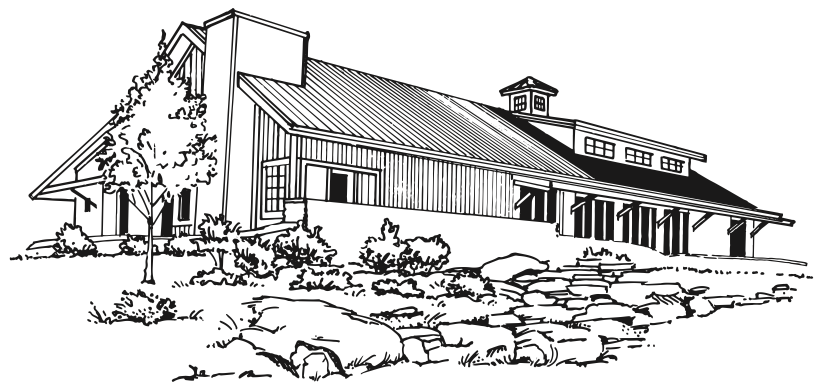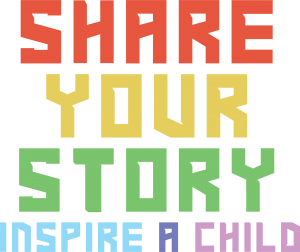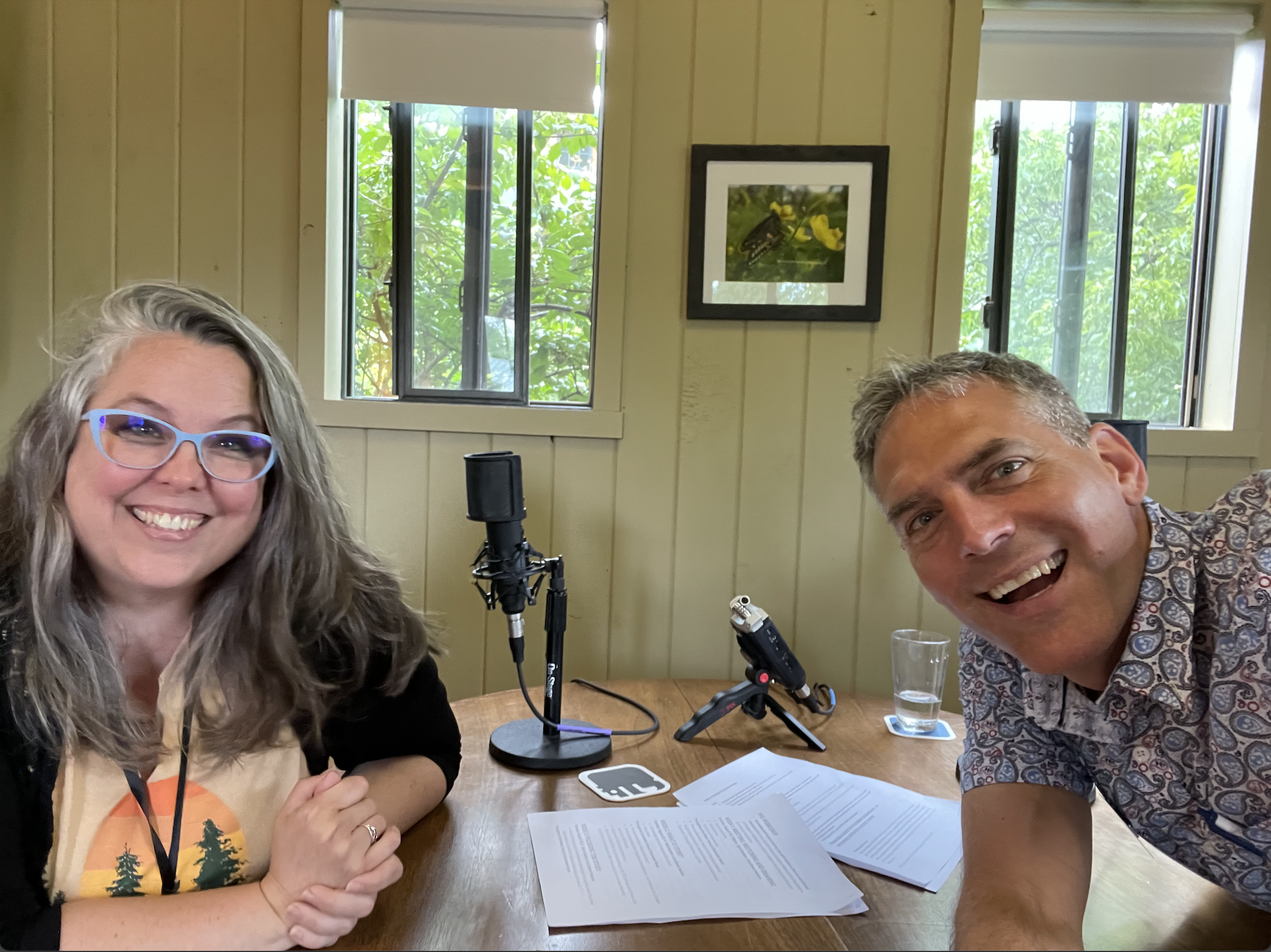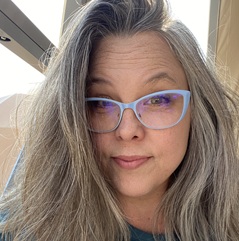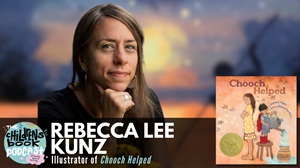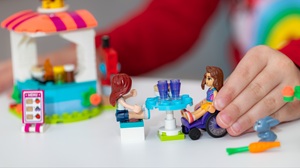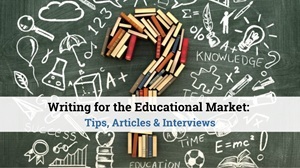What You’ll Find In this Podcast
Courtney Pippin-Mathur joined George Brown on our podcast to talk more about her art method, and her upcoming projects as an author-illustrator, and the Highlights Foundation course she teaches: From Idea & Sketch to Dummy & Submission: An Author/Illustrator Online Course.
Podcast Highlights
Courtney Pippin-Mathur on layering emotion in picture books:
…I call picture books layer cakes, because a lot of times when people think [of] story then they think it [as] very simple. Maybe they’ve gotten that they have to have an arc in a story; you know, something has happened; beginning, middle, end; beginning, climax, end. So I talk about how you have to have emotion, because I think that’s something that a lot of people forget… Which can also be the theme you know, and that’s so important in picture books. [But] the best picture books are if you’re in the store reading them, the ones that make you cry. And it doesn’t have to be like sobbing like sad (although that can be great too). But just like, it really hits you. So we really try to talk about how stories are multi-layered, and how you can get all of these things in there and how to really build it up. You have to build up picture books, and then you have to pare it down because you know–you try to keep it to as few words as possible. It’s tricky.
Courtney on opening exercises for writers and illustrators in her course Idea & Sketch to Dummy & Submission:
So we start with sketches–and we actually start with sketches of their main characters. [People generally] have an idea in mind. So we’re able to kind of just jump right in with the sketching of their character, because if they’re a writer and they’re thinking about making art, then they might not have gotten to that point. So I just make them dive right in and talk about how we create characters.
And if they’re an illustrator, they [usually] already have that character in their mind. Most of the illustrators who come in who have been accomplished Illustrators, [and] they know exactly you know what they want to write about. They just don’t know how to get there.
So we share the sketches. I give them a little bit of feedback. I try to encourage them to do more sketches instead of less, because sometimes you become so tied to the way that your character looks, [and] maybe it’s not the best it can be. So that’s just a lot of fun, and it’s also fun to engage where people are at in their skills, because everyone in the class [is different]. I’ve had really accomplished illustrators to just starting out and that’s OK!
Courtney on the end result of her course, Idea & Sketch to Dummy & Submission:
And by the end of it, they know how to submit a dummy digitally, which I think is huge right now.
Courtney describing her art method:
I used to sketch, sketch everything–you know traditionally on paper with a pencil–but I’ve become so familiar with Procreate.
Courtney’s experience while staying at the Highlights Foundation Retreat center:
Because, you know, sometimes the well runs dry. And I had not come up with a new story idea for like 6 months because I also work at a bookstore and that was taking a lot of my attention. But I did; I came up with a new story idea yesterday, and my friends who are here suggested some great ideas. And I just wrote the first draft and I love that cuz every time I come to Highlights I come away with something solid.
Full Transcript
George: Hello listeners, this is George Brown at the Highlights Foundation. I just had a lovely interview with Courtney Pippin-Mathur talking about her upcoming online class about ideas and sketches, turned to dummies and submissions for authors and illustrators. Also, just a lovely chat about her books, picture books, artwork, art style, etcetera. I hope you’ll enjoy this podcast. Thanks for listening. Welcome to the Highlights Foundation Gather podcast. Our mission is to positively impact children by amplifying the voices of storytellers who inform, educate, and inspire children to become their best selves. Today’s guest is Courtney Pippin-Mathur. Welcome, Courtney.
Courtney: Thank you so much, George, I’m happy to be here.
George: Glad to have you. So Courtney creates humorous and heartfelt books for kids, including Maya was Grumpy, Dragons Rule Princesses Drool, and Happy Diwali co-authored with Sanyukta Mathur. Courtney lives in Northern Virginia with, I love this, she lives with a knight, a princess, and two dragons, which leads to many exciting adventures. Oh, that’s so fun to hear.
Courtney: Oh thank you. I love reading that after Dragons Rule Princesses Drool because it’s actually about my kids, my daughters the princesses, the boys with the Dragons.
George: And it sounds like that’s how you live out your life in the household.
Courtney: It’s very chaotic, wonderful but chaotic.
George: So, Courtney, you’re here this week on a personal retreat, and I want to get into that in a minute and just talk about, like the projects you’re working on while you’re here and what you’re doing. But the first thing I wanted to start with is talking about your online class that you do for the Highlights Foundation. So it’s called From idea and sketch to dummy and submission an author illustrator online course. So tell me a little bit about that. Sounds like this is a class for authors and illustrators.
Courtney: Yes, it is. And actually we recently changed names so that we can encompass kind of everything we do in the class. And it’s for illustrators who want to write picture books, and we teach them how to do that, or for writers who have an artistic vent and have always kind of wondered if they could illustrate books and we basically, we start from sketching characters, getting the story fleshed out and figuring out how to paginate your story, how to work on pace and plot, and getting to the final dummy, which a dummy is a sketch of your entire book that you use for submission to agents and editors.
George: OK, and so it’s an online class, I think I saw, is it like maybe five or six weeks and so each week you do a lesson.
Courtney: It is 6 weeks, yeah.
George: And then what else happens in the format of the class?
Courtney: Listen, we have a lot of groups. We kind of work together online and like group modules. People can comment on each other. We have a lot of 1 to 1 between me and the students and the students in other classes because this is the fifth time I’ve been teaching it, I think. They have formed like their own critique groups and still go together and work together because they form these wonderful bonds in the class. So I kind of love it. We’re together for six weeks. We’re together through the long haul. We support each other. We really encourage each other. I try to make it just a very positive place to learn how to do this.
George: Of course, building community.
Courtney: Exactly which I love.
George: All right, so I want to, I want to then like slow it down and break it down a little bit so listeners, we are cheating, we have the curriculum layout in front of us.
Courtney: So it’s there’s a pre workshop. Yes, thank you, George.
George: And then there are, let’s go through each of the six weeks. So what happens, I guess in the pre workshop is where everyone gets into the online classroom. They get to know each other so that when the course starts, they’ve had a little bit of background.
Courtney: Yes, we do introductions. Everyone has it kind of tells a little bit about themselves and we also list out our favorite picture books, you know, just to kind of remind ourselves what we’re hearing, what we really want to accomplish one day. And I also like it because it gives him a chance to be familiar with the program that we use for you know that Highlights uses for online classes because sometimes students I have a lot of students who come to the class and they’re like, I don’t know how to do anything online, you know, but I’m able to, like, teach them and they learn. And by the end of it, they know how to submit a dummy digitally, which I think is huge right now.
George: OK and then the first week sketching and sharing. So how does that class work?
Courtney: So we start with sketches and we actually start with sketches of their main characters. So it’s always usually because people have thought about, you know, I want to write a picture book, and they usually have an idea in mind. So we’re able to kind of just jump right in with the sketching of their character, because when you’re, if they’re writer and they’re thinking about making art, then they might not have gotten to that point. So I just make them dive right in and talk about how we create characters and if they’re an illustrator, they already have that character in their mind. Most of the illustrators who come in who have been accomplished, Illustrators, they know exactly you know what they want to write about. They just don’t know how to get there. So we share the sketches. I give them a little bit of feedback. I try to encourage them to do more sketches instead of less because sometimes you become so tied to the way that your character looks, any kind of, you know, maybe it’s not the best it can be. So that’s just a lot of fun, and it’s also fun to kind of engage where people are at in their skills, because everyone in the class. I’ve had people from being really accomplished illustrators to just starting out and that’s OK. You know, we’re all we all have to start somewhere.
George: Feel like there must be so much that happens there through that sketching process, right? Because as you’re thinking about that character? And you’re trying to apply those attributes into the sketch. You’re actually going a little deeper and learning more about your character.
Courtney: Yeah, it actually that’s very true, especially as an illustrator myself, as I’m drawing characters, I start thinking about their personalities. And one thing that people really have to learn is how to imbue their characters with these personalities just through lines and artwork. And instead of drawing a character just like face. Going forward, how about let’s try, you know, putting them through different exercises like how do they move and also putting things on them to kind of show their personalities and stuff. So it’s a lot of fun and I do have them sketch different characters because I believe sometimes people get so stuck, you know, and they’re like, I know I only like to draw this one thing, But if you stretch yourself. Well, you might find something else you know.
George: Right, right. All right, Week 2. Oh, what is a story. OK, tell me what is a story.
Courtney: So it’s funny because I call picture books layer cakes because a lot of times when people think they want the story then they think it is a kind of a very simple. Maybe they’ve gotten that they have to have an arc in a story. You know, something has happened, beginning, middle end, beginning, climax, end. So I talked to him about how you have to have emotion because I think that’s something that a lot of people forget is that picture books, they always have an emotion. Which can also be the theme you know, and that’s so important in picture books. The best picture books are if you’re in the store reading them, the ones that make you cry. And it doesn’t have to be like sobbing like sad, although that can be great too. But just like it really hits you. So we really try to talk about how stories are multi layered and how you can get all of these things in there and how to really, like build it up. You have to build up the picture books and then you have to pair it down because you know you try to keep it to as few words as possible, it’s tricky.
George: You have to have all that before you, right.
Courtney: In under 500 words or less. Yeah, I like, can’t be more people are always like I read books that are more certainly as many words as.
George: So we’ve worked on the sketch. We’ve then thought about like, what really makes the story OK and then the next week is called polishing the story. I can only imagine what that does.
Courtney: Revision, revision, revision and it’s funny cause I love revision because when I’m revising, I know I have a picture book that’s got the spark right that I know it become something. And so we start like we have roundtable groups where we share and that’s when we have guests who come in and teach with us. We have Natasha Cozy and we also have a Aram Kim and Aram’s been with us for three years now or no since the beginning. So I guess it’s been three years. She is an art director as well as an author, illustrator. So it’s wonderful to get her perspective. And then Natasha is going to come in and teach us all about the different ways that she creates her artwork and works through her story. So we all, they get some different perspective in and besides just me, we get to work together. You know it’s like a critique group within the class which I think is always great.
George: Fantastic and Aram was here a couple of weeks ago and she did a podcast with us so we have a podcast with Aram too.
Courtney: Oh yeah. And I’ll tell you a secret. Oh, Aram was my art director for my last picture books that I did.
George: Oh wow.
Courtney: It was hilarious because we met his co-teachers and then I had a book acquired by Macmillan and when I was here in October, she came in and she was like, hey, guess what? I’m going to be your art director. So it was awesome. I loved working with her.
George: Ohh, when she didn’t even know.
Courtney: No, we didn’t know.
George: Like when the book was bought and what was that book?
Courtney: Yeah, it was really cool. That book is called It’s Holi and it’s the second book, and this was written by my sister-in-law Sanyukta Mathur. My husband is from India and so we have a multicultural, multiracial family and it’s about the celebration of Holi, which is this big fun like kind of party in the summer where we throw colors and water at each other. And it’s the true story of her son, who did not want to play Holi one year because he was afraid of being the colors in his eyes and how she was able to solve that. So it was so much fun because the last one we kind of wrote the story together, but this one she came up with the idea on her own and, you know, basically wrote the story and I just get to draw pictures of my nephew, which is a lot of fun.
George: Was he your main character when you’re sketching that one?
Courtney: Yes, it was hilarious because in Happy Diwali, which is also the story of our family, I was like, I’m not gonna make anyone in the family the main character. But in this one, Nikhil, my nephew is the main character, so it’s hilarious. He loves it.
George: And is that book out? Is that?
Courtney: That will be coming out in February of next year, 2024.
George: OK, great. OK. So we’ve let me just see here, we did the sketching, the story, the polishing, the next step, oh, how to make it dummy. I love watching dummies be made.
Courtney: Oh, I know. Aren’t they fun? I think it’s the hardest step, especially for writers who are wanting to illustrate is making the dummy. Because when you think about it you don’t realize how many drawings you have to do for the dummy. And like I said, the dummy is basically a sketch of the entire book. So it is a lot of art, a lot of work, but it’s also wonderful because that’s when you can actually see the story, kind of, you know, take life in the visual format.
George: And this is just like a detailing question, but how do you do that dummy piece? Are you doing like an 11 x 17 piece of paper? Are you folding something up like?
Courtney: That’s a great question. You could do it several ways. One way is you can take like 8 by 11, just regular paper, 4 sheets and fold it in half and then you have your dummy right there. And I do all of mine online on Procreate, where you just make each separate image and then you put them together in a PDF.
George: OK so, so I want to tangent for one second and talk about how you work art wise. Are you then starting sketching digitally?
Courtney: I am. I used to not, I used to sketch, sketch everything you know traditionally on paper with a pencil but I’ve become so familiar with Procreate, so I’ve now created two picture books on it that I can start with my sketches on there now, and I’ve learned even how to make a quick sketch dummy because I think your first dummy should be fast and dirty, right? You just kind of got to get things out. Try to figure out compositions. And so I actually start that on Procreate. So the from the very beginning to the very end, everything is on my iPad.
George: With an iPad pencil, or do you use this in teak for or? How do you?
Courtney: An iPad pencil for us and keyboard it’s connected to like your Mac or your, you can connect it to a regular computer too.
George: OK.
Courtney: The reason I love the iPad is because it’s all kind of contained in the one device and it’s very portable, so I kind of have all my artwork with me all the time.
George: And are you actually then submitting your final files from a Procreate file?
Courtney: I know I actually have to convert it into a Photoshop file, but you can do that now on Procreate.
George: OK.
Courtney: So it’s such a I just love it. It’s such a intuitive tool where you can kind of do everything that I’ve really been into it. And you know, I used to be all traditional and then I was Adobe Photoshop and I was using a lot, I was using the small walcom into us, not this antique because they were expensive. But then that’s when I moved to the iPad. And I don’t know, it’s just kind of my thing right now, who knows, I might go back to traditional one day.
George: That’s all right, right.
Courtney: Yeah, it’s. All about the journey as being the artist trying new things.
George: So with the dummy piece, it’s getting students to think about what works best for them in the medium and then giving them framework for building that.
Courtney: Oh yes and we always have. We have people who still work very traditionally and they get a little nervous at first when they hear that they’re going to have to, you know, upload the dummy so that we can see it in the class. But it’s very easy and I give them instructions on how to do it, so if that they’re drawing it on paper, they can get it from paper, you know, onto the Internet to where we can see it and then we also have people who, you know, like me create, Procreate. So it’s very simple for them, but it’s, I don’t know, it’s so fun when people start doing the dummy and they can’t believe that they’ve actually created it. Sometimes I think we have mental hurdles over, you know, so we really work.
George: Sure, sure.
Courtney: That’s why we kind of break it into steps. We work our way up to the big, the big boy, you know the big project.
George: And that’s the whole point to a class, right is to be able to work together through a process.
Courtney: Exactly support each other, give each other advice. I’ve even learned things from my students before, and I love that you know some who were more versed in Procreate than I was.
George: That was great, So some technical some craft based.
Courtney: Yeah, exactly. No matter where you are in your journey, we try to meet you there and try to help you.
George: And so everyone shows their dummies and does like a little show and tell and then are they talking through their storyline as part of that dummy?
Courtney: They yeah, we always have. So when they’re broken into modules on the program that Highlights uses, which I have forgotten what the name has.
George: It’s called Canvas.
Courtney: Is it Canvas OK I don’t remember.
George: It’s one of those two.
Courtney: But it’s really good. It’s really intuitive. So we always have kind of a discussion board and so they can share for the actual dummy themselves. Sometimes it’s just they just show it to me and we have a, I set aside like an hour for each student and we go over the dummy so I can go really in depth with them and they can tell me I try to start out with saying with what do you need where you know, what do you feel like is missing or is there something in particular that you want to address and then we kind of go from there. And I can give them the one-on-one feedback.
George: So each student you spend an hour talking through the dummy.
Courtney: Yep, 30 minutes to an hour depending on what they need.
George: Ohh my goodness.
Courtney: I always say 30 minutes, but as my monitors know, I stretch it, yeah.
George: Got OK, got it. So, but it’s at least a 30 minute conversation, one-on-one to talk about the dummy and the work they’re doing.
Courtney: And I always leave time at the end for them to be like, OK, do you have any other questions about, you know? So I, because I tried to give them as much information because I know when I started there wasn’t there weren’t things like this and so sometimes you’re just like well about agents or what about editors or you know.
George: Right. Some of the industry talk about how it works.
Courtney: We try to share everything.
George: And then the next week is peer office hour. Oh that’s the piece you were just telling me about. That’s the console that you do, or there’s also peer office hour.
Courtney: So pure office hour started last year and it’s a wonderful thing that I think it was Molly, who is my online monitor. Last year started, I love Molly, they would do, they would meet on Mondays at like 12:00 o’clock and I would not be in there. I wouldn’t be there at all so that they could discuss freely and give feedback. And it was like they started doing it every week. And I thought that was a brilliant idea because they have another hour to work together to encourage each other. You know, I think it really helps the progress.
George: And without the teacher there, it allows them to be a little more free.
Courtney: Right.
George: OK. And then it wraps up with the kind of a final session.
Courtney: So we’ll have a Aram and Tasha and myself and what we do is we usually have kind of an ask me anything and we’ll discuss, you know, different points of view about like, once your book is published, what happens then or, you know, how do you submit to agents? Cause that’s a, you know, a big thing. And I kind of go over it lightly. I know Highlights has other great classes about how to submit to agents, but we just we’re kind of like we’re trying to give you all the information, you know. And I also give students my e-mail. And I’m like, I’ve had students contact me later, you know, oh, I forgot to ask you this and I’m like, it’s totally fine, know I’m happy to help you.
George: So you say this class is for authors or illustrators like so who typically like is there a, do you see authors coming with the full manuscript or people usually with just an idea.
Courtney: Yeah, that’s funny. Usually, that’s a great question. So I’m trying to think so we used to have a lot more authors who were curious about illustrating, who had some artistic talent, you know? But now we’re having a lot more illustrators, and I myself sometimes as a visual thinker. You have an idea, but you don’t know how to flesh it out, so that’s usually an illustrator problem, right? The writers, they often come in with the story, and then sometimes we have to work on what a picture book is, you know, like for example, the picture book. Who is your audience? Sometimes when people write picture books, they think about the parents. Which parents do read the stories, but the audience is, the kids you know, and how it’s kind of a visual literacy, how the pictures and the words work together. So you don’t maybe need as many words as you think you do, because a lot of things can be shown in the art. So I think last time I had more illustrators than authors, but usually it’s kind of a 50/50.
George: That’s great and everyone’s learning from each other.
Courtney: I love it, exactly, exactly, you know, cause you have some really crackerjack writers who come in, and I’m always amazed by writers because I feel that that’s one thing that I’m really working on is how to be a better writer. And so I love people coming in who are just like, man, they got it down. It’s so cool to see and then I can help them with my expertise.
George: Great. Alright. Well that is from idea and sketch to dummy and submission and author, illustrator online course and I think it starts in mid August of 2023. So if you’re hearing this before then please feel free to check it out online and join Courtney.
Courtney: It does.
George: The thing you were just talking about is, is becoming a writer and your author journey. So what’s going on while you’re here at the Highlights Foundation?
Courtney: So I am actually here on, they used to be called unworkshops, but now they’re called personal retreats, which is a great name. And when I’m working, I’m here with a couple of friends and I am working on, I have written a story and it’s pretty much like my agent likes it and I’m just kind of softening some pieces of it or polishing I should say, but I’m also trying to design the main character because the way that I drew them I don’t like anymore. So I’m trying to figure that out, but I also my goal was to come up with a new story idea. Because, you know, sometimes the well runs dry. And I had not come up with a new story idea for like 6 months because I also work at a bookstore and that was kind of taking a lot of my attention but I did; I came up with a new story idea yesterday, and my friends who are here kind of suggested some great ideas. And I just wrote the first draft and I love that cuz every time I come to Highlights I come away with something solid, you know?
George: Oh, that’s fine.
Courtney: Yeah, it’s, I love, it’s a magical place.
George: She’s great endorsement.
Courtney: Yeah, it really is. I tell all my students in the online class. I’m like, you should really try to come on campus, you know, because it’s just it’s wonderful and the food is delicious.
George: That’s it, the food, comfortable lodging so you can work on these creative spaces.
Courtney: Comfortable lodge. You love your own little cabin and great spaces to work around campus, so the art coop, which is awesome.
George: So talk to me about this new idea. Did you? Did you have some visuals in your head or visuals down that are working to feed this manuscript or? The manuscript starting and then you’ll come up with some art to go with it
Courtney: I have found lately that I start with like a phrase or something and then I work from there and my book fairies don’t fight, which came out in May of this year. That started with the phrase fairies don’t fight because my twins were fighting and I was trying to think of a new idea and I was looking at my garden, where I have little fairy things I’m like, that fairies don’t fight, so this new idea also kind of came from that same way, where I’m kind of obsessed with gnomes I love gnomes. And then and there’s so many great known books out lately, and I was trying to think of a new twist on it. And so I thought of 1 and I just blurted it out to my friends. And they’re like, oh, what about this? And so now as I’m writing it, because sometimes I type out the text first, I’m seeing it in my head as I write it, and I was actually talking to one of my friends who’s here, who she is, a writer. She doesn’t do art, and she was talking to me about how it’s funny because she can see that in the way that I write, because I write very short sentences that aren’t very descriptive, because I’m visualizing it in my head like a movie.
George: So you don’t have all that text because it’s.
Courtney: I don’t have to have all that text, which is funny because she actually gave me an assignment because like I said, I’m always trying to work on be a better writer to actually write it instead of just visualizing it in my head. So I’ll try that.
George: And when are you going to start sketching this?
Courtney: I might start sketching it now because I kind of want to see what the main character in the world looks like because I have this very idea in my head and it’s actually kind of inspired by the trees around Highlights. So I’m hoping.
George: Which is fun, you’re staying in the Steve Light cabin.
Courtney: Ohh, I’d love to Steve Light cabin. I tell you, I was looking at his art and then I was sitting about in the loft above the barn, which is a beautiful place to work. Looking at the window, and I could see the limbs. And then I bet inspired his art. It was awesome. I love.
George: That right. So his book Whiskers Hollow. And you have that artwork in the cabin. And he did say some of that artwork came from tromping around in the woods here. So it’s fun that you saw some of the branches.
Courtney:Oh, I believe it. He has these wonderful long thin branches. You know, Steve Lights work is amazing. And so he has these wonderful long thin branches and I can see it in the trees around how he was inspired and. It’s his and his wife share the cabin, and she also has some of her art in there too, which is our actual like, I forgot that phrases. But when you’re painting outside.
George: Yeah, her, she’s got some watercolor landscapes and stuff that Christine needed.
Courtney: I love that and it’s nice green color. It’s just a great comment to say and as are many of the others I’ve stayed in like Jane Yolen and Heidi Stemple Cabin, which is also another great one. So lots of great options here and in the barn house, which is not haunted.
George: No, definitely not. All right, so. Let’s see. We talked about what you’re working on. Oh, I want to talk about your, we talked about your process. I want to talk about your work stuff. So you mentioned that you work in a bookstore and you mentioned that you have kids. So where does the being an author illustrator, how does that fit into like a daily or a weekly routine?
Courtney: Yeah, that’s a great question. You know, I always love Jane Yolen’s advice for butt in chair. There for where you work every day, but having three kids and working a job, that’s not always possible. So I just try to work a little bit whenever I can, but whenever I do have free time, even if it’s 15 minutes or 45 minutes, you know, I just try to sit down and get like something. Maybe I’ll just paint in my journal, you know, just to have that kind of visual. Or maybe I’ll try to sit at my computer and do a story or type out on my iPad, that it’s not something I can do every day anymore, but I do try to make time of it and I think that compulsion, you know, to want to create, that’s how you know. Yes, I need to be a writer or an illustrator as you feel that compulsion.
George: And what’s your balance between a project you’re working on? I’m going to ask you about that work life balance, but like. You know that when you’re in a project and how much of it is like you’re solely focused on that project versus you still need the journaling and the.
Courtney: Yeah, that’s actually a good point, because when I don’t have, like projects, then I can journal and doodle and whatever, but if I think I have ADHD and where I can like hyper focused and when I am hyper focusing and I also have other symptoms as well. But when I’m hyper focusing on that project you know that’s it and my husband used to not understand how I could just kind of tune the children out for a little bit. You know, while I’m working, but if I’m on deadline every day, you know every day, getting it done to get it in on time. And if I’m really like excited about it every day and also I am very lucky and that the bookstore owner hired me knowing who I was as an author, illustrator. You know, it’s in my town. And so she’s always like, if you’re working on a project, you know, just tell me and we’ll give you the time off because she really wants me to continue to do that. So it’s actually really nice to have that support. Yeah, it is, it’s very nice.
George: All right, so let’s see. You just told me about your holi book that’s coming out in February.
Courtney: It’s holi. Yeah.
George: And what else?
Courtney: Came out in May from Sky Pony Press and it’s Holi is coming out in February from Henry Holt Macmillan, I believe. I I have another project that I have sold but it hasn’t been announced yet and that is 2026.
George: Oh, fantastic. So coming soon, OK.
Courtney: Yeah, hopefully so and be able to announce it soon.
George: And that’s all.
Courtney: Oh, and on that one, what’s hilarious is they keep talking about how I want to be a better writer. I’m only the writer on that one because what I wrote about is not something that I love to draw or that I’m particularly skilled at and so they were like, can we bring in another artist? And I’m like, heck yeah, you know, so I’m excited to see how that goes.
George: Part of the ongoing process of the author, illustrator journey.
Courtney: Exactly. You get to kind of sample all parts of it. I kind of love it, you know, being the illustrator for my sister in law’s books and now being a writer. So it’s fun. I think it’s great. It’s really neat to see kind of if I sit and I contemplate how my career has, you know, unfolded how it’s developed, it’s really neat.
George: Thank you Courtney Pippin-Mathur for being with us at the Highlights Foundation. Let’s go back to the barn.
Courtney: Yeah, that sounds great.
George: Have a snack. Almost.
Courtney: Is it almost dinner time? Not yet, but snack.
George: Time this has been another podcast, an HF gather podcast. From the Highlights Foundation, I’m George Brown and Courtney Pippin-Mathur has been our guest today and we look forward to seeing you. Online or at the Highlights Foundation retreat center.
